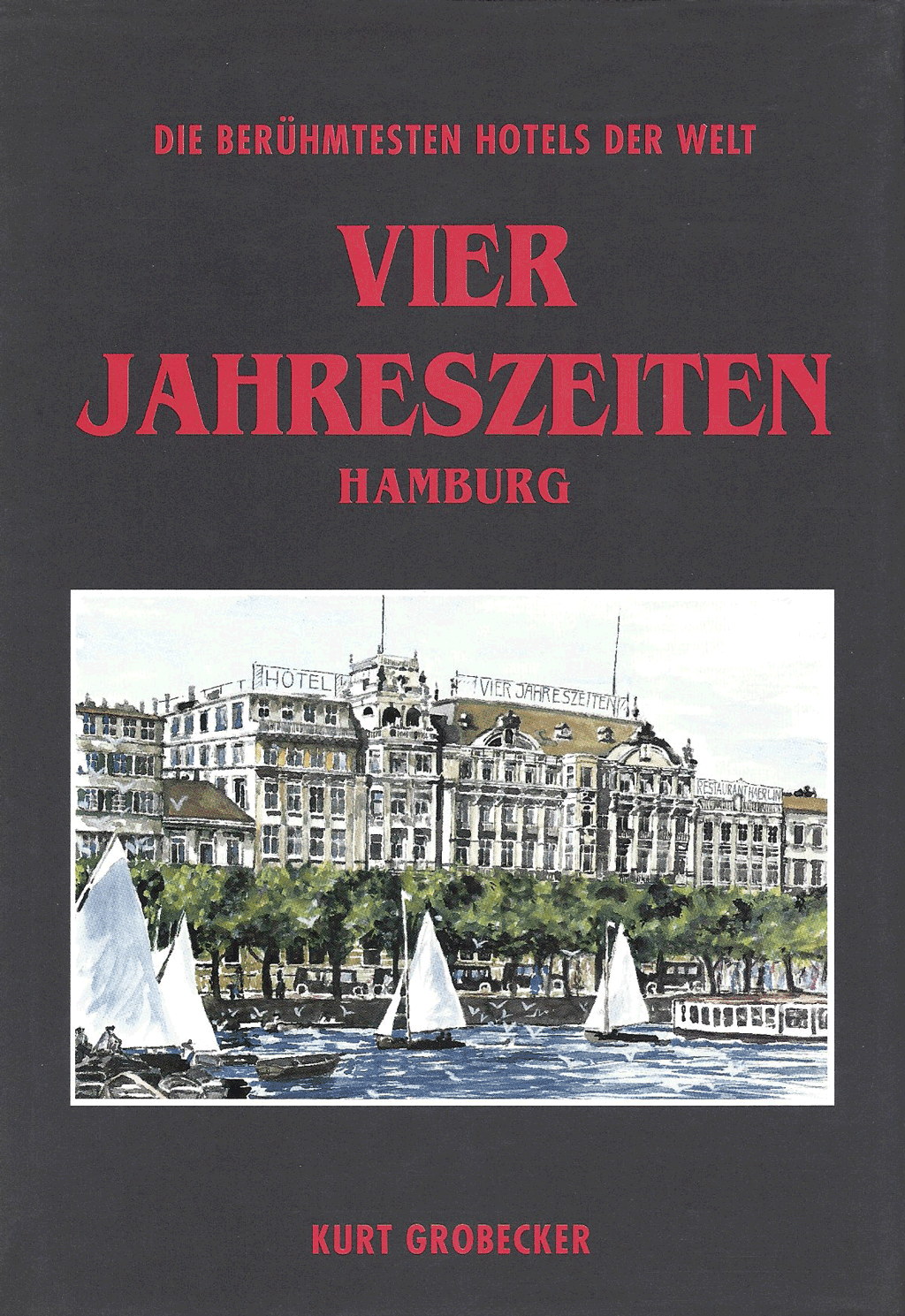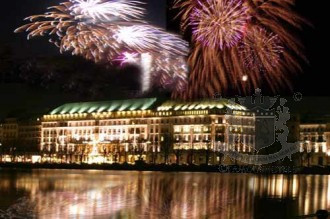Vier Jahreszeiten Hamburg
( words)
The Making of our book Vier Jahreszeiten Hamburg: The small Hotel Vier Jahreszeiten was opened in 1897 by Friedrich and Thekla Haerlin. In the beginning it had only 11 rooms, today it has 156 rooms and suites. Haerlin bought one house after the other and finally owned the entire block. In 1913 a conversation salon with view over the Binnenalster (the local river) was presented to the public. During the 1930s Haerlin replaced the disturbing bell signals on all floors by an optical light system. His first air condition set global standards - it could exchange a room's air within 10 minutes completely. Among the 22,000 name cards in the guest history system the guest list includes Sophia Loren, Kirk Douglas, Richard Nixon, Aristotle Onassis, ...
The Vier Jahreszeiten became a Raffles Hotel in 1997.
Hotel Vier Jahreszeiten Hamburg (1989) 
Gert Prantner was made GM in 1975 by the late Fritz Haerlin, who knew that his hotel was in good hands. Haerlin had been at the helm of the hotel since 1936. After researching Raffles in Singapore and the Peninsula in Hong Kong, laying a solid foundation for future work in Asia, we were called to Europe. Impressed with our work, Gert Prantner, general manager of the Hotel Vier Jahreszeiten (literally translated: Four Seasons) in Hamburg, commissioned the next book in The Most Famous Hotels in the World series. There were obvious differences between Asian and European hotel-keeping. In Asia the European way of hospitality management served as a distant example of how to do things. Hotel-keeping had orginated in Europe. In Asia five employees were assigned to fulfil a traditional European task, while in Europe it was sufficient to have one competent person who knew what to do and was even willing to take the risks and responsibility. The Vier Jahreszeiten, founded in 1897, was invariably ranked among the best hotels of Europe. It certainly was one of the most individual lead. There was the Haerlin family who owned it. And there was its GM who oozed the charm and understatement that comes naturally to North Germans. A stickler for thoroughness, Prantner would say: 'In the race for quality, there is no finish line.' The Vier Jahreszeiten showed us a fine sample of a guest record system, as only truly successful historic grand hotels had. It dated back to the 1920s. 22,000 individual cards were stored in drawers, creating an unrivalled database of personal service. Data that could be found on these cards contained: : the detailed name, address, how to address the person (including all academic and aristocratic titles) : Preferred rooms : flowers the guest loves / hates : Oscars and all other awards recently won : how many pillows : a Beef Tartar served with Cognac every night at 02:00 am : a hot water bottle placed under the blanket at the lower end of the bed every evening : conversation topics the staff should avoid under all circumstances : favourite song - for piano player in the bar : preferred welcome gift in room (Champagne, sweets, fruit basket) : former complaints, remarks and praise What ever it was - no problem; it had been 'noted'. It was Fritz Haerlin's philosophy that he wants to know every guest personally who stays longer than one night. This tradition had been continued by his general manager Gert Prantner. And there was no sight of computers. "Of course we have them. But you do not see them. A screen degrades a guest to a 'case of lodging'. We want the guest to develop a personal 'experience of residence'." It may have been pure coincidence but, soon after the publication of our book, the Vier Jahreszeiten was ranked number one hotel in Europe by Institutional Investor. It was extraordinary. In the global ranking, it lost out only to the Oriental in Bangkok. In a congratulatory note to The Most Famous Hotels in the World, Prantner recalls today: 'I learnt to treasure the work of The Most Famous Hotels in the World. You have done more for Vier Jahreszeiten than you thought.' We met Kurt Grobecker, a well known Hamburg writer. He worked with us on this book. The book was also the first time we collaborated with the artist Peter Baldinger, who produced the cover painting. Since then, his energetic brand of art has graced several of our books. In 1993, after 18 years as general manager, Prantner left the Vier Jahreszeiten. In his time at the hotel, he had tripled turnover, installed modern management systems with budgeting and marketing and taken the hotel to the top of the European hospitality league. Today he is the managing owner of RIMC - International Hotel Resort Management and Consulting GmbH.






